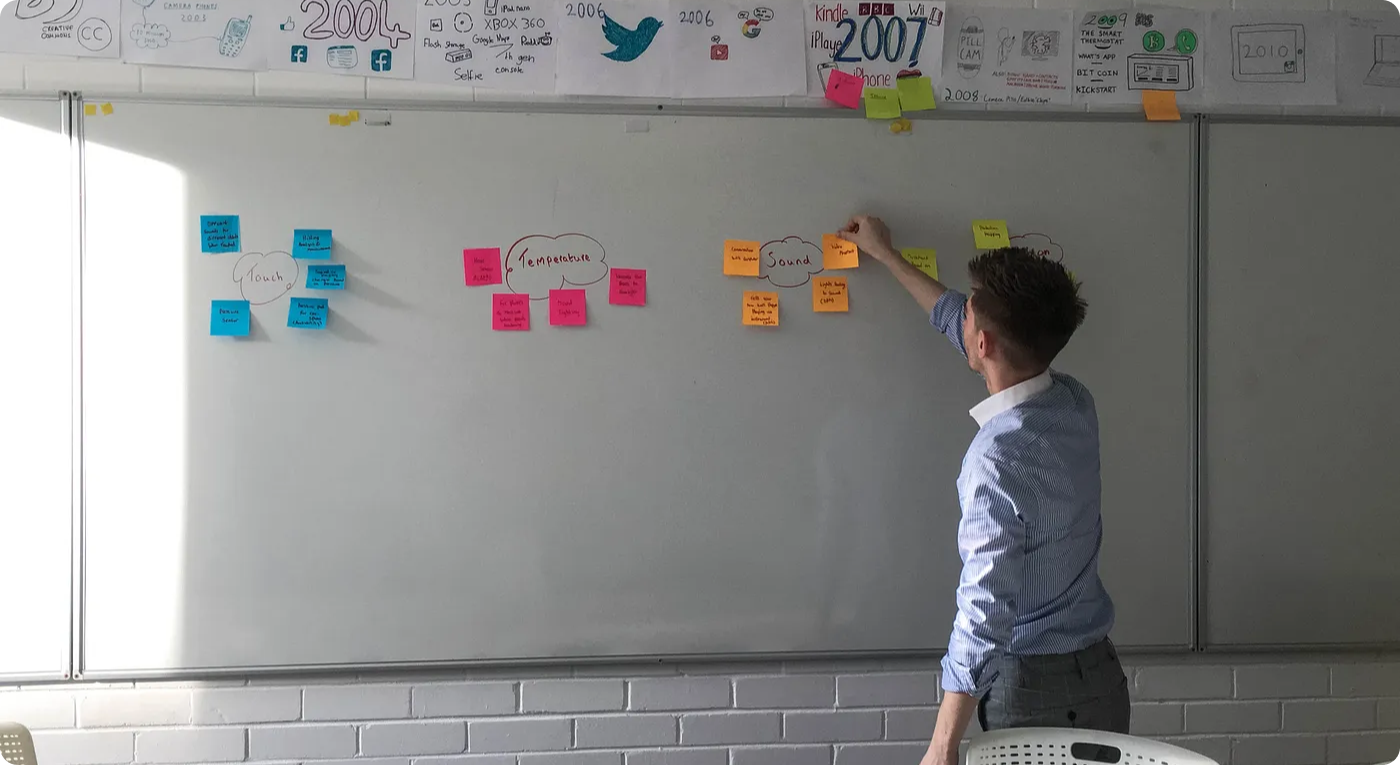A recent study published in the Wall Street Journal by Wharton professors Christian Terwiesch and Karl Ulrich tested whether MBA students or ChatGPT was better at generating ideas. They tested both the quantity of ideas and the quality of ideas. In both cases, ChatGPT greatly outperformed the Wharton MBA students. Their recommendations of combining human-AI collaboration are a smart one worth considering. You can read the article here.
I’m not surprised by their findings at all. One thing I notice over and over again when practicing ideation techniques with clients is that almost everyone, especially the designers and innovation leads running these sessions, usually comes away from ideation work with the feeling that the ideas weren’t that great and that no one came up with anything new. The only surprising thing in these reactions is that people are surprised.
I’ve been working in creative fields for a long time. It is really, really hard to come up with great ideas. Asking people to do this on the spot, while they spend most of their working hours NOT coming up with brilliant ideas, will rarely, if ever work. Creating great ideas takes a lot of practice, and generating hundreds of ideas takes a lot of time, practice, and time we rarely get.
To be brutally honest, most service designers and innovation leads I’ve worked with over the last several years (not all, but most) are themselves not very good and developing great ideas, even though they are quick to judge others. This is probably due to the fact that they also spend most of their time on other parts of the design process than ideating and testing.
Using ChatGPT for ideating is a worthwhile idea that designers and innovation leads should embrace. It is a solid training tool for people new to design and innovation in that it starts helping them recognize what a) lots of ideas (even bad ones) look like and b) what some really good ideas might look like.
An example of using ChatGPT in the ideation process might look like this:
1. Go through a robust ideation session with your team (or your class) and have them generate as many ideas as possible based on your reframes or insights.
2. After, have them use ChatGPT to generate 100 new ideas using the same prompts.
3. Let the team then prioritize the best ideas and test them. Make sure there is a representative sample, at least, from both groups.
4. Use the testing to figure out where the best ideas came from and keep honing them in the process.
5. Use ChatGPT in the 2nd and 3rd rounds of ideation to see if your team can find that breakthrough idea.
I’ve been doing this recently in my own projects with good results.
The best ideators I’ve worked with were from my work in branding and advertising since the copywriters, art directors, digital designers, and PR pros spent most of their days trying to come up with interesting ideas that would break through the noise. In their workday, ideation was the priority and the foundation. Most people today, even service designers and innovation leads don’t really spend most of their time spitting out a bunch of ideas.
That’s why ChatGPT might be a valuable addition to your design and innovation work: it quickly develops lots of ideas, and even trains humans to be better at ideating themselves. It is one of the easiest ways to integrate AI into a workflow and one that could be less threatening than others. Give it a try on your next project.








